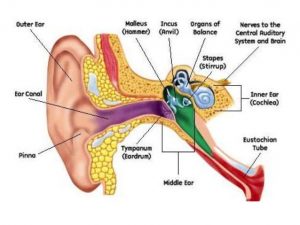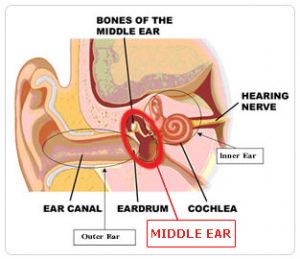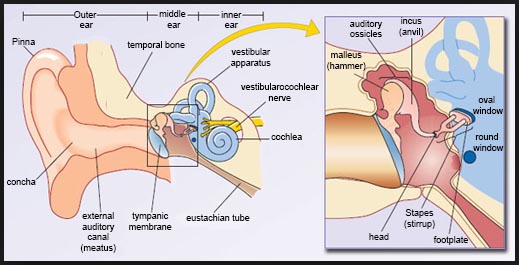4.1.3 What is the Middle Ear?

The middle ear is the air-filled chamber which contains the hammer, anvil and stirrup bones and the two middle ear muscles.
The middle ear is the air filled chamber behind the ear drum, containing the three ossicles (the bones, hammer, anvil and stirrup) and the two middle ear muscles (hammer muscle and stirrup muscle) tensor tympani and stapedius.


The middle ear cavity is encased in the solid bone of the cranium. The only normal entry point for air is the Eustachian tube leading into the pharynx (throat) which serves to equalise the pressure in the middle ear with the outside air pressure. (However air, water and debris can enter the middle ear if the ear drum has been perforated.)
In the middle ear chamber is a chain of three bones (the ossicles) called hammer (malleus), anvil (incus) and stirrup (stapes). These bones are named after their shape. The three bones form a bridge from the ear drum to the inner ear. The third bone, the stirrup bone, presses its footplate into a membrane called the oval window, which leads into the fluid-filled inner ear chamber.

The hammer bone is mobilised by the tensor tympani (hammer muscle) which increases the tension on the ear drum. The stirrup bone is mobilised by the stapedius (stirrup muscle) which presses the footplate of the stirrup onto the oval window, altering the fluid pressure in the inner ear.

